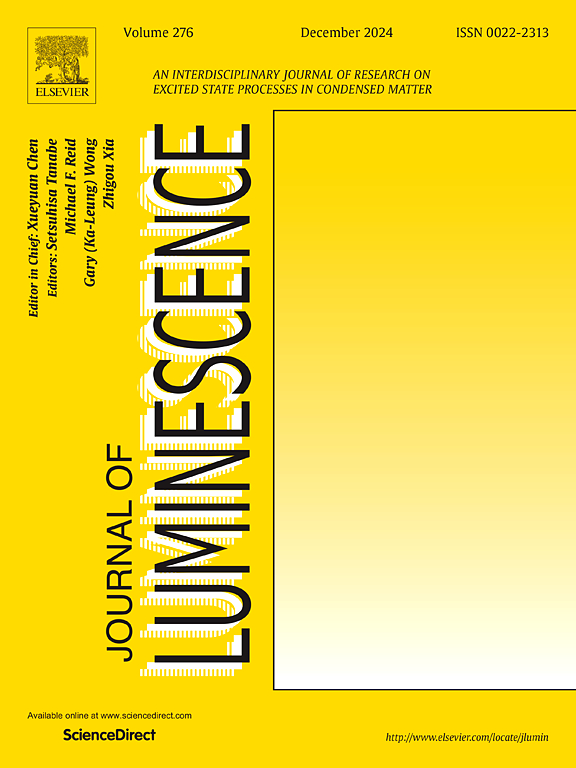Microwave-assisted synthesis of up-converting Yb3+/Eu3+ co-doped yttrium oxyfluoride micro/nano particles for white light emission
IF 3.3
3区 物理与天体物理
Q2 OPTICS
引用次数: 0
Abstract
Lanthanide ion-doped up-conversion yttrium oxyfluoride (YOF) materials have wide applications in lighting displays, biological imaging, anticounterfeiting, and more. Traditional wet chemical methods used to prepare YOF are time-consuming and have low reproducibility. Controllable and rapid synthesis of YOF micro- or nanoparticles remains a challenge for advancing their applications. In this work, Eu3+ and Yb3+ co-doped YOF nanoparticles were synthesized using a microwave-assisted method. The particles exhibited excellent up-conversion photoluminescence properties when excited with a 980 nm laser. The calcination temperature and doping concentration of rare earth elements significantly affect the emission color and intensity, and white color emission can be achieved using a single emitter by tuning the doped ion concentration.
微波辅助合成上转换Yb3+/Eu3+共掺杂氧化氟化钇微纳米白光发射粒子
镧系离子掺杂的上转换氧化氟化钇(YOF)材料在照明显示、生物成像、防伪等方面有着广泛的应用。传统的湿法化学方法制备YOF耗时长,重现性低。快速、可控地合成YOF纳米颗粒是推动其应用的一个挑战。本文采用微波辅助法制备了Eu3+和Yb3+共掺杂的YOF纳米颗粒。在980 nm激光激发下,该粒子表现出优异的上转换光致发光性能。稀土元素的煅烧温度和掺杂浓度对发射颜色和强度有显著影响,通过调整掺杂离子浓度可以实现单发射器的白色发射。
本文章由计算机程序翻译,如有差异,请以英文原文为准。
求助全文
约1分钟内获得全文
求助全文
来源期刊

Journal of Luminescence
物理-光学
CiteScore
6.70
自引率
13.90%
发文量
850
审稿时长
3.8 months
期刊介绍:
The purpose of the Journal of Luminescence is to provide a means of communication between scientists in different disciplines who share a common interest in the electronic excited states of molecular, ionic and covalent systems, whether crystalline, amorphous, or liquid.
We invite original papers and reviews on such subjects as: exciton and polariton dynamics, dynamics of localized excited states, energy and charge transport in ordered and disordered systems, radiative and non-radiative recombination, relaxation processes, vibronic interactions in electronic excited states, photochemistry in condensed systems, excited state resonance, double resonance, spin dynamics, selective excitation spectroscopy, hole burning, coherent processes in excited states, (e.g. coherent optical transients, photon echoes, transient gratings), multiphoton processes, optical bistability, photochromism, and new techniques for the study of excited states. This list is not intended to be exhaustive. Papers in the traditional areas of optical spectroscopy (absorption, MCD, luminescence, Raman scattering) are welcome. Papers on applications (phosphors, scintillators, electro- and cathodo-luminescence, radiography, bioimaging, solar energy, energy conversion, etc.) are also welcome if they present results of scientific, rather than only technological interest. However, papers containing purely theoretical results, not related to phenomena in the excited states, as well as papers using luminescence spectroscopy to perform routine analytical chemistry or biochemistry procedures, are outside the scope of the journal. Some exceptions will be possible at the discretion of the editors.
 求助内容:
求助内容: 应助结果提醒方式:
应助结果提醒方式:


